Top 10
North America’s Oldest Petroglyphs
By ERIC A. POWELL
Tuesday, December 10, 2013
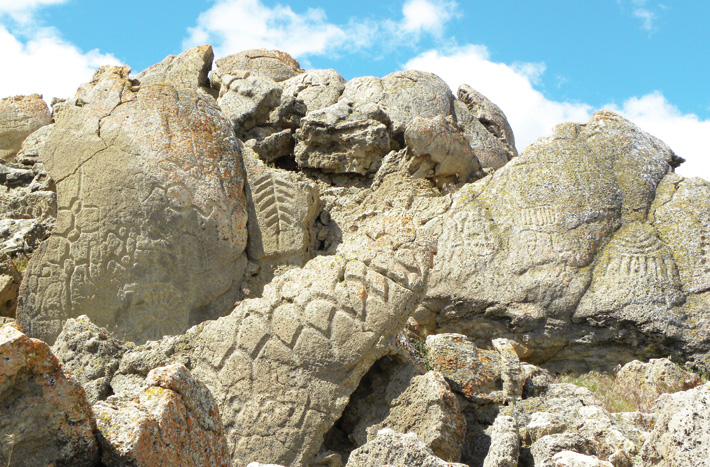
Paleoindians are often thought of as pioneering explorers or expert mammoth hunters. But new dating of geometric rock carvings in Nevada’s Winnemucca Lake basin now suggests they were also accomplished artists.
A team led by University of Colorado paleoclimatologist Larry Benson was able to date the carbonate crust that covers the petroglyphs. Benson concluded that the artwork must have been created more than 10,000 years ago, before the carvings were submerged beneath the lake’s higher waters and covered in carbonate. “We knew they were old,” he says. “We just didn’t know they were that old.” According to Benson, it’s possible that paleoartists made the carvings as early as 15,000 years ago.
Just what those artists meant to depict is unclear. Some of the petroglyphs may represent clouds and lightning, others are diamond- shaped, and there are some patterns that might represent trees. Whatever the inspiration for the carvings, the Pyramid Lake Paiute Tribe, which owns the Winnemucca Lake basin, considers them sacred to this day.
Remapping the Khmer Empire
By NIKHIL SWAMINATHAN
Tuesday, December 10, 2013
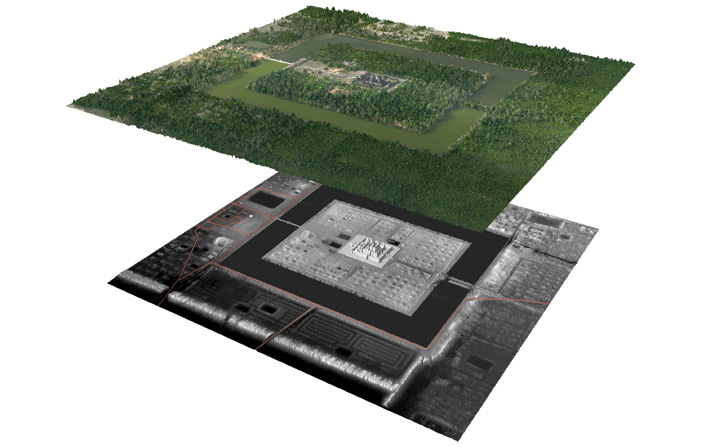
Airborne laser sensing peered beneath vast stretches of centuries-old tree cover to reshape archaeologists’ understanding of the ancient Angkor region, once the epicenter of the Khmer Empire. Previously, scholars believed Khmer cities and temple complexes were enclosed spaces with walls or moats surrounding gridded “downtowns.”
Using lidar, a team led by Damian Evans, a postdoctoral fellow at the University of Sydney, showed that these grids extended beyond the fortifications, creating much bigger urban landscapes. For instance, the mapping project turned up evidence of urbanization on both sides of Angkor Wat’s famed moat. Meanwhile, the twelfth-century A.D. Khmer capital Angkor Thom has now quadrupled in size. Imaging showed that its city-block structure extended far beyond the three-and-a-half square miles contained within its walls. It actually encompass more than 13 square miles of formally planned urban space, including within it Angkor Wat, which predated Angkor Thom by 100 years and sits a mile south of the city’s center.
The findings lend support to the theory that Angkor fell because it grew beyond its means. “What you have is an urban structure that is analogous to the giant, low-density megacities that have developed in the twentieth century with the advent of the car,” Evans explains, “a dense urban core surrounded by a vast lower-density periphery, or ‘sprawl.’”
World’s Oldest Port
By ROSSELLA LORENZI
Tuesday, December 10, 2013
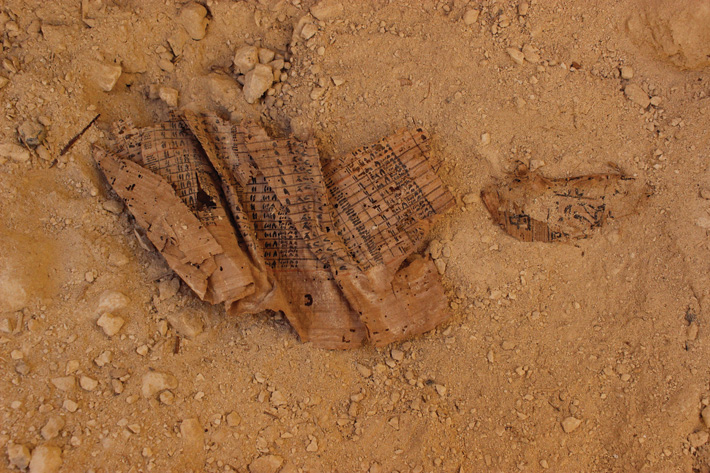
While excavating an underground storage system cut into bedrock at Wadi el-Jarf, nearly 110 miles south of Suez and close to the Red Sea, archaeologists discovered fragments of boats, ropes, and pottery. The artifacts date to the reign of the 4th Dynasty King Khufu, or Cheops, builder of the Great Pyramid of Giza, who ruled from 2551 to 2528 B.C.
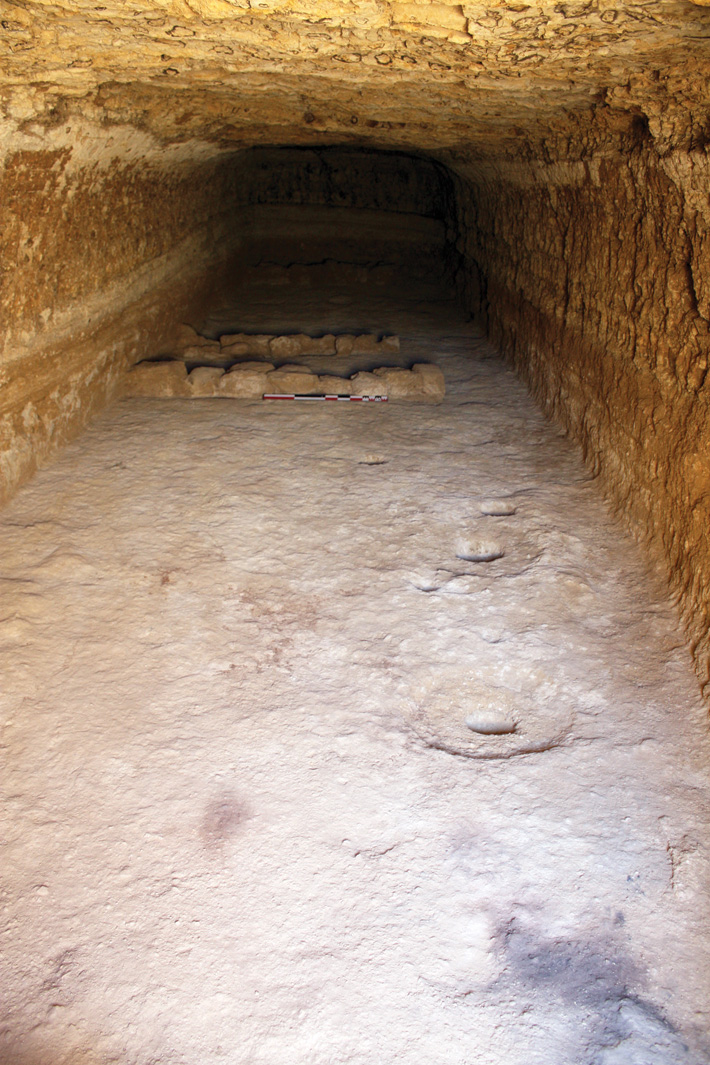 Beginning on the shore and continuing underwater, an assembly of large blocks and limestone slabs inscribed with Cheops’ name form the remains of an L-shaped jetty. Limestone anchors from numerous large ships testify to voyages launched to export copper and stones from the Sinai Peninsula to the Nile Valley. “Ancient inland harbors are known on riversides, but the jetty of Wadi el-Jarf predates by more than 1,000 years any other known structure of this kind,” says expedition leader Pierre Tallet, a University of Paris-Sorbonne Egyptologist, about the 4,500-year-old harbor.
Beginning on the shore and continuing underwater, an assembly of large blocks and limestone slabs inscribed with Cheops’ name form the remains of an L-shaped jetty. Limestone anchors from numerous large ships testify to voyages launched to export copper and stones from the Sinai Peninsula to the Nile Valley. “Ancient inland harbors are known on riversides, but the jetty of Wadi el-Jarf predates by more than 1,000 years any other known structure of this kind,” says expedition leader Pierre Tallet, a University of Paris-Sorbonne Egyptologist, about the 4,500-year-old harbor.
Tallet and colleagues also found 10 very well-preserved papyri among hundreds of fragments. The documents, which are proving difficult to reassemble, are the oldest papyri ever found in Egypt. One fragment is a diary written by Merrer, an Old Kingdom official involved in the building of the Great Pyramid. Though actual details of the pyramid’s construction are scarce, Tallet says, "the journal provides a precise account for every working day."
Colonial Cannibalism
By NIKHIL SWAMINATHAN
Tuesday, December 10, 2013
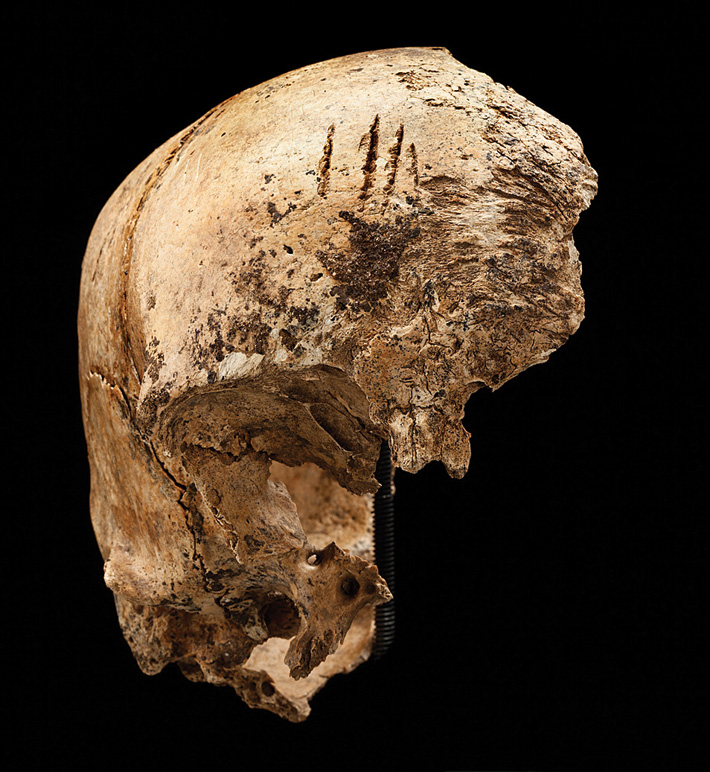 Six different accounts from Jamestown, the first permanent English colony in the New World, describe episodes of cannibalism among colonists. Former Jamestown president George Percy wrote in 1625 that, during the brutal 1609–1610 winter that caused mass starvation among 300 settlers, “notheinge was Spared to mainteyne Lyfe … as to digge upp deade corpes outt of graves and to eate them.”
Six different accounts from Jamestown, the first permanent English colony in the New World, describe episodes of cannibalism among colonists. Former Jamestown president George Percy wrote in 1625 that, during the brutal 1609–1610 winter that caused mass starvation among 300 settlers, “notheinge was Spared to mainteyne Lyfe … as to digge upp deade corpes outt of graves and to eate them.”
William Kelso, an archaeologist with Preservation Virginia who has excavated Jamestown since 1994, doubted Percy’s horrific descriptions—until this spring, when his team found the butchered skull of a 14-year-old girl buried in a trash pit along with the remains of horses and dogs, other sources of food for the desperate colonists. Jane, as the girl is now known, was originally thought to have been an upper-class settler, but recent analysis found her skeleton has low lead levels. The rich at Jamestown ate from pewter dishes, essentially giving themselves lead poisoning.
Jane’s remains are the first physical evidence of cannibalism at any American colony. “There’s no doubt cannibalism happened,” says Kelso. “It says how close to failure this colony came.”
Critter Diggers
By JARRETT A. LOBELL
Tuesday, December 10, 2013
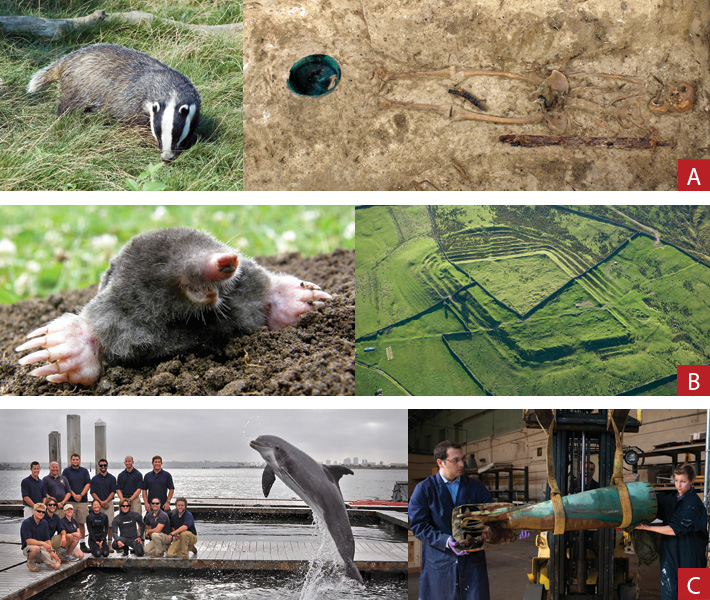
Fieldwork can be uncomfortable for long-legged humans, but burrowing animals are built for digging. Furry creatures have provided invaluable assists at two different European sites. In northern Germany, a badger discovered nine remarkable 900-year-old burials, including that of a richly outfitted warrior. “There was no knowledge of these graves and no reason to investigate without the badger’s assistance,” says archaeologist Felix Biermann, who continues to dig the site. In Cumbria, England, burrowing moles have pushed up ancient objects at second-century Whitley Castle, uncovering invaluable evidence of Roman life at the fort. There have only been two previous digs, and Whitley Castle is now a protected site that human archaeologists can never explore. And not to be outdone by their terrestrial counterparts, specially trained mine-hunting dolphins discovered a nineteenth-century Howell torpedo off the coast of San Diego. Only 50 Howells were made, and only two had previously been found.
Advertisement
Advertisement
IN THIS ISSUE
Advertisement

Recent Issues
-
 May/June 2024
May/June 2024
-
 March/April 2024
March/April 2024
-
 January/February 2024
January/February 2024
-
 November/December 2023
November/December 2023
-
 September/October 2023
September/October 2023
-
 July/August 2023
July/August 2023
-
 May/June 2023
May/June 2023
-
 March/April 2023
March/April 2023
-
 January/February 2023
January/February 2023
-
 November/December 2022
November/December 2022
-
 September/October 2022
September/October 2022
-
 July/August 2022
July/August 2022
-
 May/June 2022
May/June 2022
-
 March/April 2022
March/April 2022
-
 January/February 2022
January/February 2022
-
 November/December 2021
November/December 2021
-
 September/October 2021
September/October 2021
-
 July/August 2021
July/August 2021
-
 May/June 2021
May/June 2021
-
 March/April 2021
March/April 2021
-
 January/February 2021
January/February 2021
-
 November/December 2020
November/December 2020
-
 September/October 2020
September/October 2020
-
 July/August 2020
July/August 2020
-
 May/June 2020
May/June 2020
-
 March/April 2020
March/April 2020
-
 January/February 2020
January/February 2020
-
 November/December 2019
November/December 2019
-
 September/October 2019
September/October 2019
-
 July/August 2019
July/August 2019
-
 May/June 2019
May/June 2019
-
 March/April 2019
March/April 2019
-
 January/February 2019
January/February 2019
-
 November/December 2018
November/December 2018
-
 September/October 2018
September/October 2018
-
 July/August 2018
July/August 2018
-
 May/June 2018
May/June 2018
-
 March/April 2018
March/April 2018
-
 January/February 2018
January/February 2018
-
 November/December 2017
November/December 2017
-
 September/October 2017
September/October 2017
-
 July/August 2017
July/August 2017
-
 May/June 2017
May/June 2017
-
 March/April 2017
March/April 2017
-
 January/February 2017
January/February 2017
-
 November/December 2016
November/December 2016
-
 September/October 2016
September/October 2016
-
 July/August 2016
July/August 2016
-
 May/June 2016
May/June 2016
-
 March/April 2016
March/April 2016
-
 January/February 2016
January/February 2016
-
 November/December 2015
November/December 2015
-
 September/October 2015
September/October 2015
-
 July/August 2015
July/August 2015
-
 May/June 2015
May/June 2015
-
 March/April 2015
March/April 2015
-
 January/February 2015
January/February 2015
-
 November/December 2014
November/December 2014
-
 September/October 2014
September/October 2014
-
 July/August 2014
July/August 2014
-
 May/June 2014
May/June 2014
-
 March/April 2014
March/April 2014
-
 January/February 2014
January/February 2014
-
 November/December 2013
November/December 2013
-
 September/October 2013
September/October 2013
-
 July/August 2013
July/August 2013
-
 May/June 2013
May/June 2013
-
 March/April 2013
March/April 2013
-
 January/February 2013
January/February 2013
-
 November/December 2012
November/December 2012
-
 September/October 2012
September/October 2012
-
 July/August 2012
July/August 2012
-
 May/June 2012
May/June 2012
-
 March/April 2012
March/April 2012
-
 January/February 2012
January/February 2012
-
 November/December 2011
November/December 2011
-
 September/October 2011
September/October 2011
-
 July/August 2011
July/August 2011
-
 May/June 2011
May/June 2011
-
 March/April 2011
March/April 2011
-
 January/February 2011
January/February 2011
Advertisement






